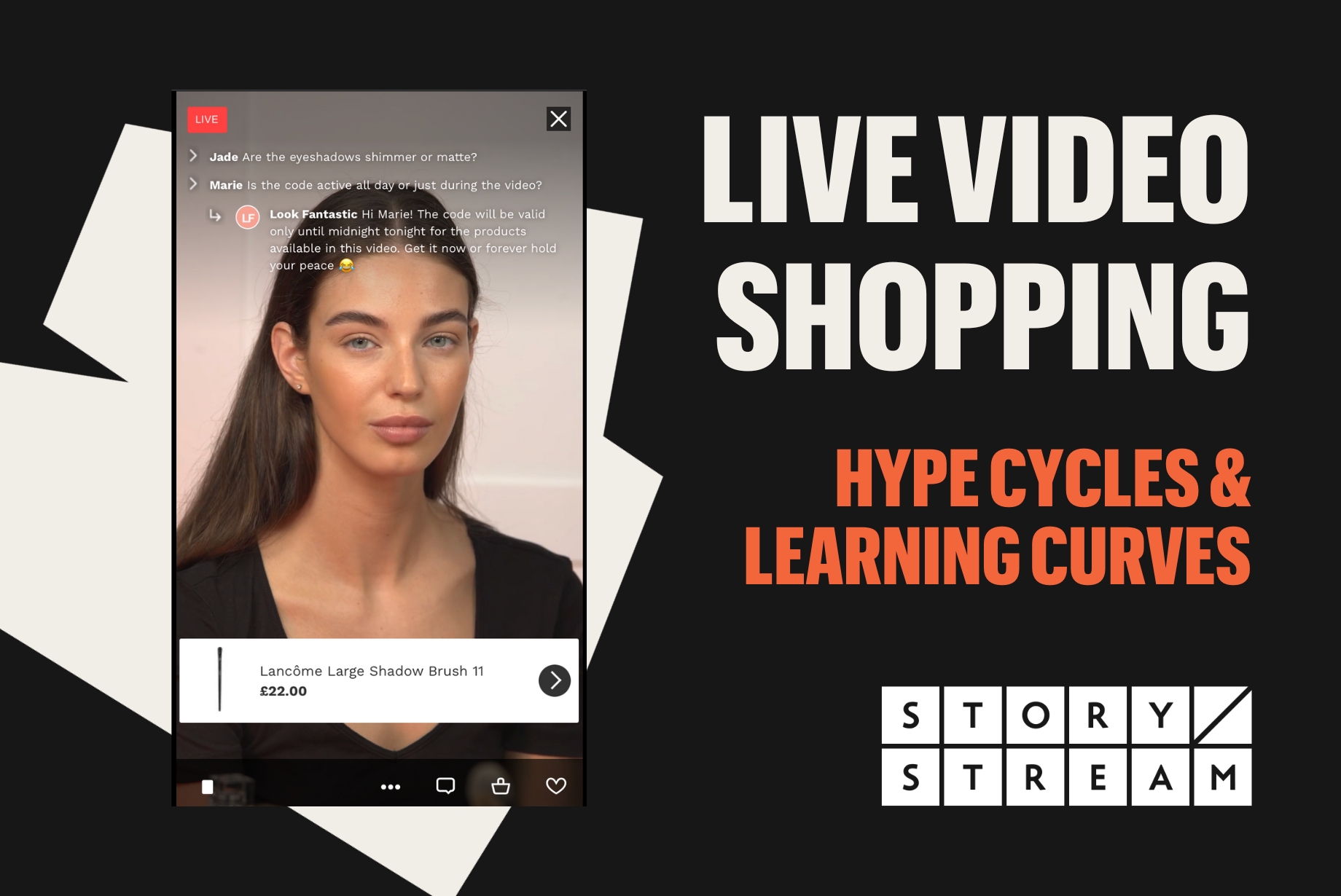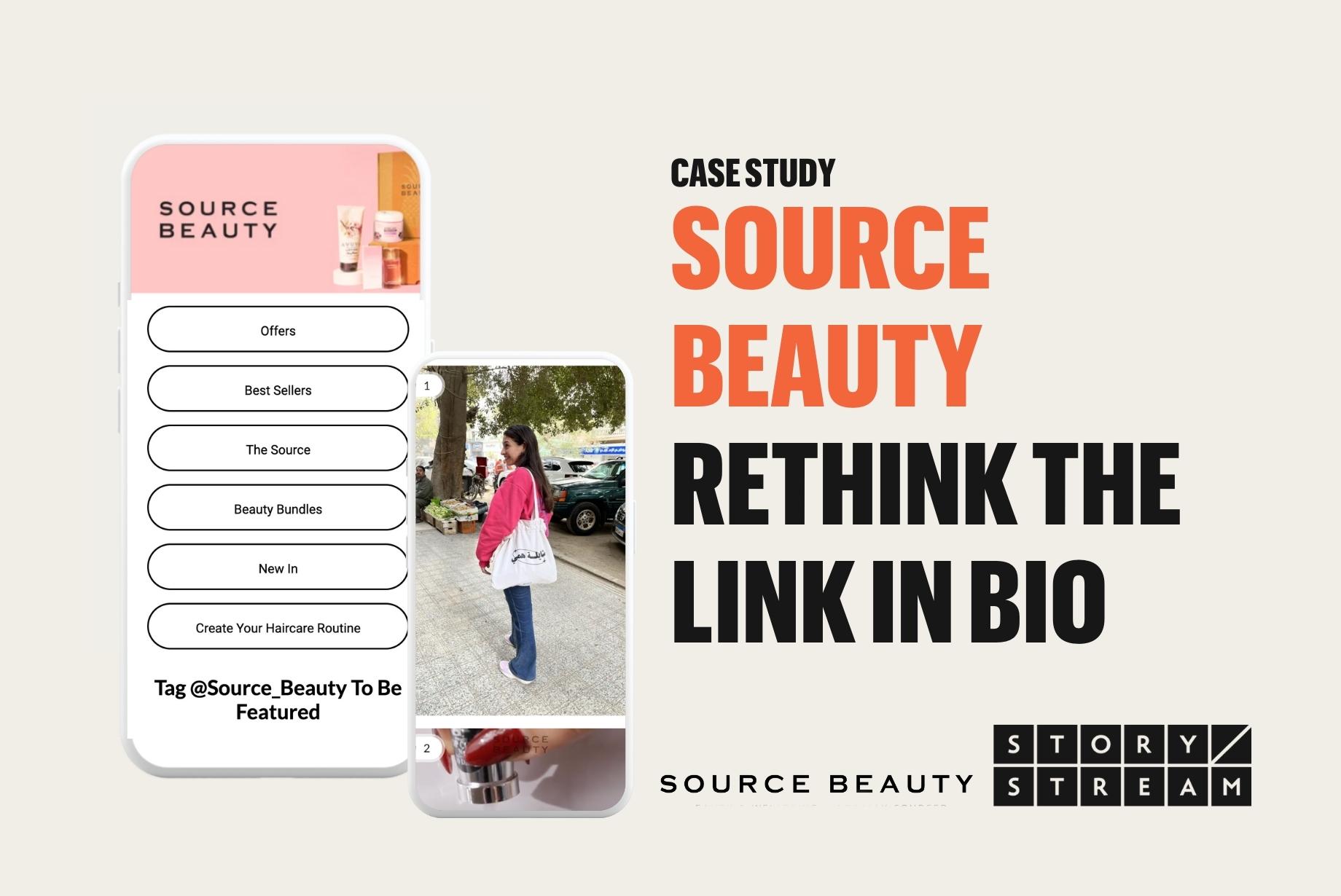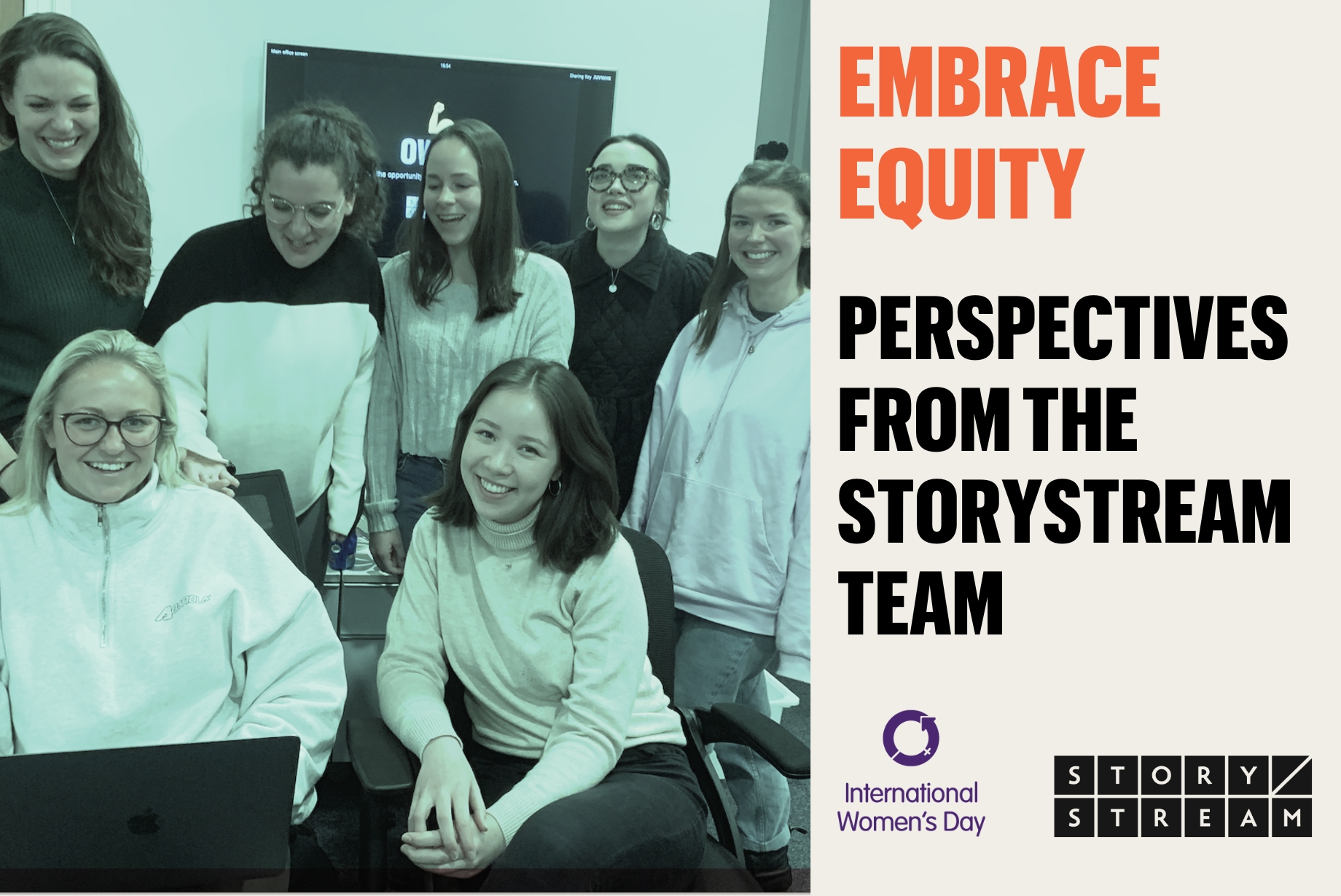Live Video Shopping (LVS) – the broadcasting of live or pre-recorded shoppable video streams to promote products and engage with customers in real-time – has been amongst the most discussed topics in marketing circles for the past two years.
And having appeared in the 2021 Gartner Hype Cycle for Digital Commerce at the boundary line separating “the Peak of Inflated Expectations” and “Trough of Disillusionment” – it stands to reason that, in the time since, brands have been learning lessons about how, why, and when Live Video Shopping can work for them.
That learning curve is something we know all about here at StoryStream. Over the past 12 months, we’ve worked alongside brands including LookFantastic, Lancome, Braun, Oral-B and Zavvi as they begin their journey into live commerce – the lessons they’ve learned, we’ve learned too.
In the spirit of sharing – and with the intention of playing our part in nudging “live commerce” up Gartner’s hallowed “Slope of Enlightenment” – here’s a quick look at what we’ve learned about Live Video Shopping in the past 12 months, and why, if you’re not already piloting a strategy for your brand, the time to do so is very much now…
A Brief History of Live Video Shopping
Taobao Live first debuted in 2016, and since then the shopping format has become a mainstay of China’s eCommerce market. Headlines – e.g. “the first 30 minutes of Alibaba’s Singles’ Day presales campaign on Taobao Live generated an impressive $7.5 billion in total transaction value” (McKinsey) – proliferate, demanding the attention of eCommerce marketers globally each time.
The popularity – and success – of Live Video Shopping in China is only one of the reasons that D2C brands elsewhere have sat up and taken notice. Factors including the rise of social commerce (which has gradually habituated social media users to entertaining, shoppable content – “shoppertainment”), and the intensification of digital engagement during the pandemic also play a role. Overwhelmingly though, it’s the sheer volume of pain points that LVS, if properly executed, can solve that most attract brands to the idea.
As a direct-to-consumer (D2C) strategy, Live Video Shopping offers multiple benefits – chiefly around helping brands to increase their online presence, engage with their customers, and boost sales. A quick recap:
Real-time engagement with customers
Live Video Shopping allows brands to engage with customers in real-time, providing a more personal and interactive shopping experience. Customers can ask questions, provide feedback, and get immediate responses from the host or brand representative. This helps to build trust and credibility with customers and can lead to increased brand loyalty and repeat business.
Top stat: 36% of online shoppers say that their preferred host for a Live Video Shopping stream is a “product expert”. That’s more than double the number that selected “influencer/celebrity” or “brand representative”.
Showcasing products in an authentic way
Live Video Shopping provides brands with an opportunity to showcase their products in an authentic way. Unlike pre-recorded videos or static product images, Live Video Shopping allows brands to demonstrate their products in action and provide customers with a deeper understanding of how they work. This can help to build confidence in the product there and then, and increase the chances of making a sale.
Top stat: 63% of Gen Zs say that Live Video Shopping would increase their likelihood to purchase (versus 58% of Millennials, and 51% of over 45s). (IMRG)
Increased conversion rates
Live Video Shopping has been shown to increase conversion rates and drive sales. According to a study by McKinsey, Live Video Shopping can increase conversion rates by up to three times compared to traditional eCommerce methods. This is because LVS provides customers with a more engaging and interactive shopping experience that can help to overcome barriers to purchase.
Top stat: 46% of online shoppers say that they have made a purchase based on a piece of branded video content (while only 31% of respondents say they have been inspired to make a purchase based on a video hosted by an influencer or opinion leader).
Customer data collection
Live Video Shopping can help brands collect valuable customer data that can be used to improve future marketing campaigns. By directly embedding the player experience (rather than, e.g. hosting it on a social media or marketplace), brands can track customer interactions during live streams, gain insights into customer preferences and behaviour, and ultimately tailor their marketing and personalisation strategies accordingly.
Top stat: 64% of online shoppers have viewed at least one Live Video Shopping experience in the past 12 months. And when asked whether they’d be interested in seeing more Live Video Shopping content from brands they follow online, 63% of online shoppers said “yes”.
Engaging Emerging Demographics
Gen Z will soon overtake the Millennial generation in becoming the largest cohort of shoppers by purchase power. For brands looking to engage Gen Z shoppers, it is becoming increasingly obvious that video commerce cannot be overlooked. 75% of Gen Zs have watched at least one Live Video Shopping stream in the past 12 months, with a greater proportion watching three or more streams than 1-2.
Top stat: 49% of Gen Zs said that Live Video Shopping would encourage them to spend more money with a brand than any other form of online advertising (versus 37% of Millenials, and 30% of over 45s).
Access All Areas?
Live Video Shopping promises unparalleled access to shoppers’ attention. Foremost an opportunity to create an experience that surprises and delights viewers – an engaging LVS event can also short-circuit the customer decision journey and turn viewers into buyers there and then. For the show to hit all the right notes, though, there’s plenty to consider ahead of the day.
Perhaps unsurprisingly, we’ve seen first-hand that the number #1 struggle for brands when launching their LVS strategy is around building an audience. A “build it and they will come” attitude simply doesn’t wash with consumers, who demonstrably need a little encouragement to invest time in a stream.
In answering the question of how to best engage an audience for a video commerce event, we encourage brands to think of an LVS show as the centrepiece of a coordinated campaign. That’s great news for a digital marketer, as it effectively means that recruiting an audience for your live show follows the same logic of a well-orchestrated digital marketing campaign.
The mechanics of a successful amplification plan:
- Engage your existing CRM
- Align your social and web properties
- Incentivise sharing (the viewer-get-viewer approach)
- Leverage Influencers
- Add CTAs to physical marketing collateral
Engage your CRM: Start with your customer base
All that hard work you’ve put into your CRM can really pay off when it comes to finding an engaged audience for your live-streamed shoppable event. Of course, you can go the route
of sending a blanket email to all opted-in contacts, but the benefits of getting a little more granular (and even introducing some personalisation) have certainly been proven to pay off. Here’s one example of an effective segmentation strategy:
- Segment your “existing customers”: there’s a big difference between a customer who bought from you once three years ago and a customer who shops your new looks weekly. Looking at recency and frequency metrics in your CRM and creating segments accordingly will help you tailor your message. Think: “we’d love to get back in touch …” for lapsed customers, and “As one of our MVPs, we want to give you the inside track…” for your more regular shoppers.
- Get granular with your marketing opt-in list: not every contact in your email database will be a customer, of course (if only, right?) but there may still be something about their profile that allows you to tailor their invitation message. Gender, age, birthday, location, etc. – all demographic markers that might indicate a likelihood to align to a given message.
- Think deeply about your buyers: just as the focus metrics are likely to differ from brand to brand, so too are customer habits. The benefits of hosting a shoppable video stream may be obvious to a fashion brand previewing a new season’s edit, or a cosmetic brand keen to showcase its latest regimes … but what if you’re, for example, an automotive brand? It’s here that the question of “should I try live video?” is actually best answered through a look first at your CRM.
For brands whose products typically come with a longer purchase cycle attached, the ability to showcase what’s new and exciting through an engaging live-streamed piece of content can be
of a different tone: targeting customers who last made a purchase 2-3 years ago, for example, or customers whose needs may be changing owing to a change in lifestyle. It might even be a case of wanting to advertise accessories and add-ons to very recent purchasers of a product or ensuring they’re getting the most out of their experience through live Q&As. Let your customer data guide you.
Make sure your event is well-signposted across your site and social profiles
As the classic digital marketing proverb goes: if all roads lead to your eCommerce site, then be
sure you’re optimising the journey for ongoing customer engagement. (It’s a proverb now, anyway.)
Prominent CTAs at critical discovery points of your site will help to bolster your attendee list, and – as your shoppable video strategy gets ever more finely tuned in pushing users down the funnel – drive conversion.
Further to promoting your event organically on social media, you’ll undoubtedly also consider adding some paid social promotion to your mix too. Which social networks your audience is most active on is likely something your brand has a handle on already, of course – and it’s likely that you will also be able to look back at previous paid social campaigns to glean some helpful insight on where to source the best bang for your bucks.
You might also want to think about experimenting with some new channels, too. Alongside the usual suspects (Instagram, Facebook, Twitter) we’d suggest thinking about platforms where users typically spend lots of their time in-app engaging with video content: Reddit (where the ability to target advertising by subreddit affiliation opens up a whole world of reliable, passion-led segmentation) and TikTok, for example.
A final word on social media: if you are going to be promoting your live streams across social networks, be sure to monitor any conversation that might spring up on those platforms when the time comes for your shoppable experience to premiere (this is in addition to moderating your live chat). Twitter, especially, is the default channel of choice for many when it comes to voicing opinions and asking questions – setting up some social listening around your live shopping event can help you manage and triage the full extent of any queries (and maybe nudge some additional users toward making a purchase, too!).
Incentivise sharing
Effectively empowering your community to work on a “member get member” basis is a proven strategy for amplification – but success starts with making sure you’ve nailed the “what’s in it for me?” Short-lived discount codes that can be applied, at checkout, to baskets created during your live stream are often the most practical route, with the efficacy of those codes then easily tracked post-event. Your customers are uniquely placed to help you find others just like them … and it can really be as simple as offering a compelling quid pro quo.
Leverage influencer clout
For brands about to dip their first tentative toe into Live Video Shopping, working with content creators – alternately known as influencers, micro-influencers etc. – represents a fantastic way to solve a couple of problems simultaneously. Firstly: creators have an audience (and well-chosen ones will have your audience). But secondly, when it comes to capturing and holding attention through digital productions: they’re the pros.
Teaming up with an influencer to help produce your live stream does come with an additional cost dimension – a dimension that may prove prohibitive to your brand. But even if going “all in” (i.e. with an influencer acting as your host) is deemed a step too far for your brand, seeding promotion through an influencer (and perhaps combining with an exclusive discount code) can represent an effective amplification tactic for acquiring an audience for your live stream.
Get physical
If you’re going to be investing in shoppable streams over the course of a year – and an effective Live Video Shopping strategy typically plans at least that far ahead – then maximising the visibility of your productions across all customer touchpoints should be considered. Adding CTAs to your live stream calendar (think about that calendar as a landing page that promotes upcoming live streams, as well as making previous productions available on-demand) on product packaging, promotional inserts, and receipts are low-hanging, attention-grabbing opportunities that you can turn on, and then let do the work of recruiting an audience in the background.
Stream On
What’s promised – that Live Video Shopping is a powerful tool that can help brands increase their online presence, engage with customers, and drive sales – hasn’t changed since LVS first emerged on the scene for most marketers in 2021.
It’s our belief that by providing a more personal and interactive shopping experience – one that still foregrounds authenticity, i.e. honest representation of products and services, in its creative execution – LVS can help to build trust and credibility with customers.
Industry-wide, there’s a growing feeling that we’re now coming over the hump of the learning curve. It’s time to turn those streams into reality.




